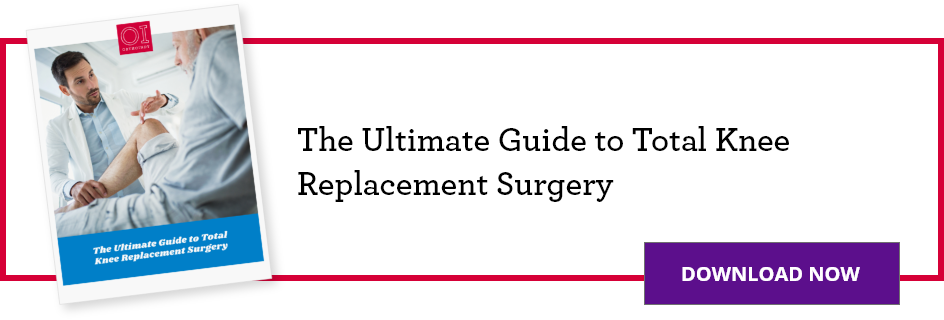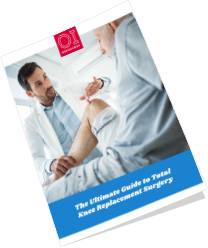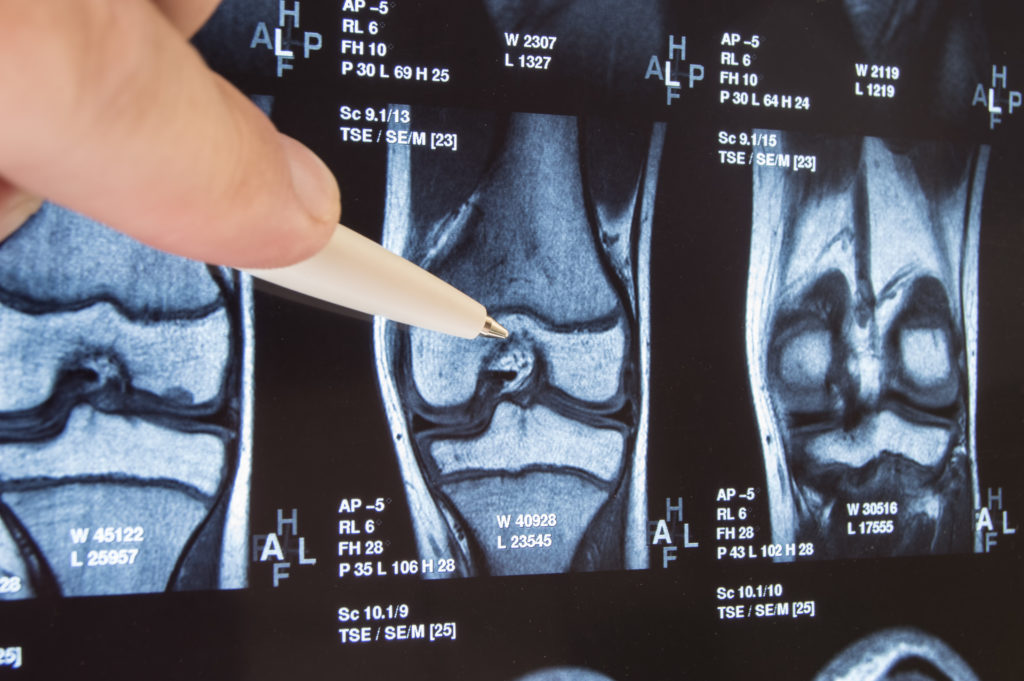This post is part of The Ultimate Guide to Total Knee Replacement
For patients looking to relieve pain from knee arthritis, total knee replacement can be an extremely effective option, but in some cases, a less invasive partial knee replacement can effectively relieve knee pain.
Read on to learn the differences between total and partial replacements and the risks and benefits of both options for knee replacement surgery.
When is partial knee replacement performed?
A partial knee replacement is also known as a unicompartmental knee replacement. During this procedure, rather than replacing the entire knee joint, only the diseased portion of the knee is resurfaced.
This procedure is an alternative to a total knee replacement, as it’s best for patients whose disease is limited to just one area of the knee.
“The ideal candidate for a partial knee replacement has knee arthritis limited to one compartment of the knee, intact ligaments, normal range of motion, minimal deformity and is not excessively obese,” says Dr. Ed Hellman, a total joint specialist at OrthoIndy.
There are three compartments in a knee joint: a medial and lateral compartment between the ends of the femur (thigh) and tibia (shin) bones and a third compartment behind your kneecap.
If only one of the compartments in your knee joint is affected by arthritis, it is possible that a total joint specialist can do a partial knee resurfacing in just that one compartment, leaving the other two healthy compartments alone.
Benefits of a partial knee replacement
Benefits of a partial knee replacement over a total knee replacement include:
- Smaller incision
- Less blood loss
- Faster recovery
- Better range of motion
- A more “normal” feeling knee
Risks and considerations
While a partial knee replacement may be less invasive than a total knee replacement, there are still some things consider, including:
- A total knee replacement is more reliable in completely relieving pain for a longer period of time.
- A partial knee replacement has a higher revision rate or need for another surgery compared to a total knee replacement.
- Rheumatoid arthritis patients have better success with total knee replacements.
“One of the most important factors that determines the success of a partial knee replacement is patient selection,” says Dr. Hellman. “When done for the right patient, with isolated damage to their knee, we can expect excellent results. For about 85 percent of our patients, their knee replacements last ten years or longer.”
Ultimately, your joint specialist will work with you to determine whether you should have a total or partial knee replacement based on your age, activity level, range of motion before surgery, and knee deformity.
Learn more about joint replacement surgery at OrthoIndy

Schedule an appointment
Your well-being is important to us. If you have knee pain and are considering knee replacement surgery, schedule an appointment with one of our orthopedic specialists to review your options.
If your injury or condition is recent, you can walk right into one of our OrthoIndy Urgent Care locations for immediate care. For rehabilitation and physical therapy, no referral is needed to see one of our physical therapists.

The Ultimate Guide to Knee Pain Relief
Take control of your knee pain, learn about treatment options, and find out if surgery might be able to help you get back to normal.





